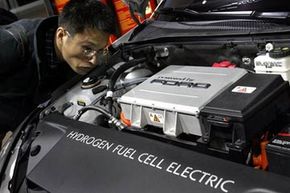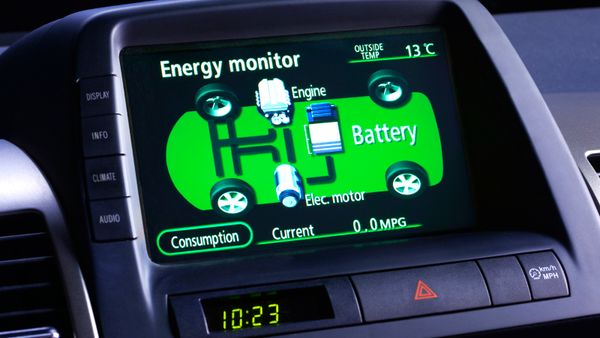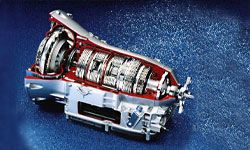You probably know that a hybrid car uses both a gasoline engine and an electric motor. But greater complexity often translates into less efficiency. So how does this combination of power sources actually cut fuel use?
The basic answer is that electric motors are most efficient for low-speed driving -- they get the car going with a minimum expenditure of energy. Since gasoline engines operate better at high speed, they kick in for highway driving. This teamwork results in hybrids that get close to 50 miles per gallon, a 25-percent improvement over gasoline-only vehicles.
Advertisement
Hybrids often use an Atkinson cycle engine, which is not quite as powerful as a standard motor but uses gasoline more efficiently [source: MixedPower.com].
Engineers have used a number of other design elements to increase the fuel efficiency of hybrids:
- Regenerative braking. In regular cars, the friction of braking generates heat that goes to waste. Hybrids capture that energy and use it to recharge the batteries.
- Aerodynamic design. Every car uses energy to overcome wind resistance, especially at higher speeds. Most hybrids are shaped to cut through the air more smoothly.
- Low weight. It takes less fuel to move less weight. Hybrids use smaller, lighter engines, and automakers employ materials like magnesium and aluminum to cut weight further [source: Hybridcars.com].
- Continuously variable transmission. This type of transmission, which operates on a pulley system rather than using toothed gears, allows the engine to run at optimum revolutions per minute. It doesn't have to speed up and slow down as gears shift. You get the same power while burning less gas [source: Edmunds].
- Efficient tires. The tires on hybrids are often narrower, with less rolling resistance. They are sometimes kept inflated to a higher pressure than other tires.
- Engine shut-off. When the vehicle is not moving, the gasoline engine is turned off instead of idling and wasting gas.
- Electric power steering. In most cars, belts connected to the engine run the power steering. Operating the mechanism electrically means the engine doesn't need to be running to steer easily. The same is true of the air-conditioning compressor, which is driven electrically in many hybrids [source: Edmunds].
- A choice of driving modes. Some hybrids allow you to switch to an economy mode. You sacrifice rapid acceleration for better mileage [source: Vijayenthiran].
Not all of these fuel efficiency designs are exclusive to hybrids. But because hybrid buyers are interested in miles per gallon, engineers try to add as many of them as possible to the cars' engineering.
Read on to find out more about hybrid car design.
Advertisement


